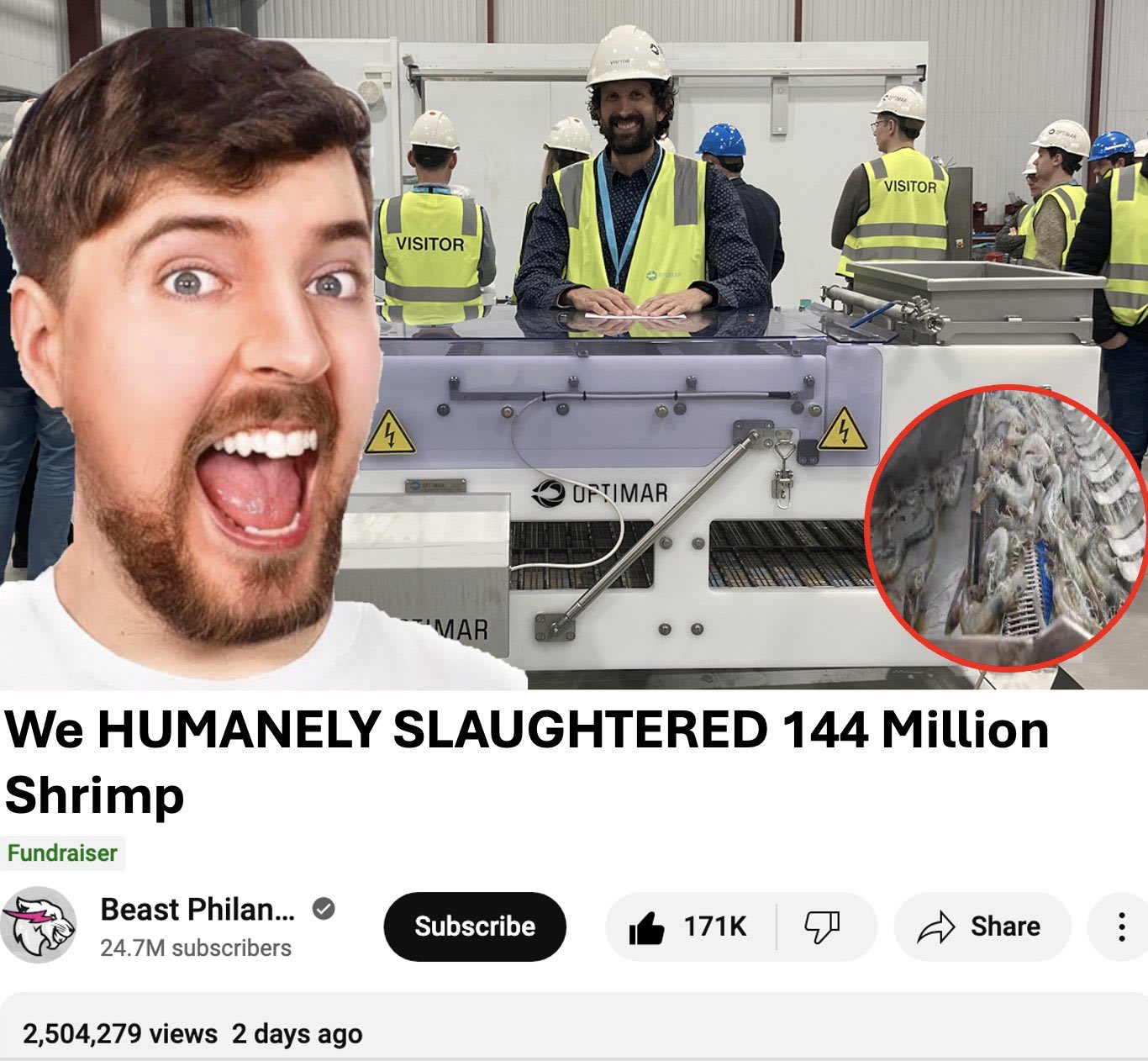
MHR🔸
Bio
I work as an engineer, donate 10% of my income, and occasionally enjoy doing independent research. I'm most interested in farmed animal welfare and the nitty-gritty details of global health and development work. In 2022, I was a co-winner of the GiveWell Change Our Mind Contest.
Posts 7
Comments190
Looking into this a bit more, from this thread it seems like OP's grants database may currently be missing as much as half of their 2025 GCR spending.
This is really awesome work, it's great to have someone put this together!
Hopefully the drop in @GiveWell's grants is just a timing or reporting issue and not nearly as large as it seems. Maybe they'll be able to clarify further!
If you wanted to extend this and cover more EA grants, I know Farmkind has a public database of grants from their platform that would be great to add. It also would be awesome if this could capture high-impact donations from Founders Pledge, but I'm not sure they provide granular enough data to be able to track by year and cause area. Maybe talking to @Matt_Lerner could shed some insight?
This year's recommendations have a pretty wide range of methods: institutional meat reduction, policy advocacy, corporate campaigning, producer outreach/support, and academic field building. Was having a wide range of approaches represented among the recommended charities something you were intentionally aiming to have, or just happenstance from the evaluation results?
Thanks so much for all the research and effort that went into this! This is a really exciting group of organizations.
I was, however, curious about one aspect the numeric cost-effectiveness estimates. It's great to see these as part of ACE's process, and I definitely learned a lot from them! But I was surprised to see how narrow the estimates were for the two Shrimp Welfare Project programs, given how radically uncertain I think basically everyone is about some of the key parameters influencing the results. Am I right in understanding that this disconnect is largely coming from ACE using AIM's suffering-adjusted day estimates per animal impacted, and those estimates not including uncertainty ranges? If so, would ACE consider trying to add uncertainty estimates on those numbers in future years?
Listed cost-effectiveness estimates:
AWO:
- ECC: 4-126 SADs/$
- Cage-free: 8-67 SADs/$
SWP:
- HSI: 43–53 SADs/$
- SSFI: 464–840 SADs/$
SVB:
- IMR: 6-14 SADs/$
THL:
- Cage-Free: 17–351 SADs/$
- BCC: 2–89 SADs/$
WAI: Unknown SADs/$
Nice post and visualization! You might be interested in a different but related thought experiment from Richard Chappell.
My perspective on this (or more generally on the question of whether the future is likely to involve realizing a large fraction of the possible value it could have, whatever form it turns out "value" takes) is perhaps a bit more hopeful. In my view, the question only makes sense if we are moral realists. If there are no objective facts about morality, then I don't see why we should care whether our own preferences or someone else's win out. Furthermore, I think worrying about these questions is probably pointless unless two other things are true: that we have some way of discovering moral facts and that those discoveries have some way of influencing our actions. Unless those two are somehow true, we have no reason to think our efforts can in expectation increase the amount of value realized in the world.
So far this is a somewhat pessimistic take, but I'm optimistic in a world where all three of these conditions are true, which in some sense is (IMO) the only world where this conversation makes any sense to have. In that world, we should expect that increasing the amount of things like intelligence, time to devote to research/reflection, and focus on studying moral questions in expectation leads toward getting closer to the true morality. Welfareans (or more broadly whatever target will produce the most true value) may indeed get enough advocates just by virtue of society making more progress on these moral questions. As an example, society today includes lots of advocates for groups like women, LGBT people, people of color etc., when historically the only advocates were a "tiny subset of crazy people." But of course moral progress is at best an extremely messy and incremental - factory-farmed animals are the victims of lots of people being either indifferent or wanting to maximize something other than welfare (profit, tasty food for humans etc.), and the impact of animal advocates has not been sufficient to prevent a massive explosion of suffering.
Still, on net I lean towards thinking that given the opportunity for study and reflection (and given the three conditions described above), we can be optimistic that we will drive toward the things that matter. Therefore, focusing on the efforts to prevent existential catastrophe or value lock-in may be among the best things we could do to ensure that we're not leaving a huge fraction of the possible value of the future on the table. That may be easier said than done, since preventing value lock-in in practice means preventing people with maximizing ideologies from successfully carrying out that maximization at least for some period of time. But that makes me hopeful that existing EA efforts may not be too far off the mark.
Do you have views on Tradewater as an offset provider? Their claim is that they can offset at $19/ton, and Giving Green seemed to think that was credible a couple years ago.


RP used to have an AI Governance and Strategy team, and if I understand correctly, that team spun out into IAPS. Can you elaborate on why that team was spun out, and why you think it would now be a good fit to restart that team within RP?